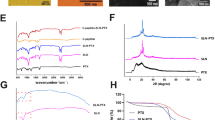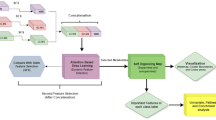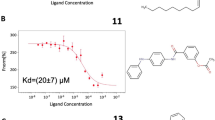Abstract
Breast cancer liver metastasis (BCLM) is characterized by high incidence and poor prognosis, lacking effective therapeutic strategies. Recent evidence suggests that lipid metabolic reprogramming plays an important role in the initiation and development of BC metastasis. In clinical practice of traditional Chinese medicine, Citri Reticulatae Pericarpium-Reynoutria japonica Houtt. (CR) herb pair is used for the treatment of BCLM. In this study, we explored the active ingredients of CR herb pair and underlying mechanisms against BCLM. By RNA sequencing analysis, we showed that extracellular matrix protein 1 isoform a (ECM1a), a secreted multifunctional glycoprotein, was a vital link between liver-metastatic potential and fatty acid (FA)-biosynthesis program in triple-negative breast cancer (TNBC) cells. Through integrative screening approaches, nobiletin and polydatin were identified as the core active ingredients of the CR herb pair. As an ECM1a inhibitor, nobiletin+polydatin combination exerted superior synergistic inhibitory effects on TNBC cells and liver-metastatic xenograft models. We further revealed that nobiletin+polydatin combination impaired ECM1a-mediated tumor FA-biosynthesis program by downregulating PI3K/AKT/mTOR/SREBPs signaling. These results support nobiletin+polydatin combination as a novel and promising therapeutic option for BCLM and highlight the role of ECM1a as the targetable master regulator of lipid metabolism in BCLM.
This is a preview of subscription content, access via your institution
Access options
Subscribe to this journal
Receive 12 print issues and online access
$259.00 per year
only $21.58 per issue
Buy this article
- Purchase on SpringerLink
- Instant access to full article PDF
Prices may be subject to local taxes which are calculated during checkout








Similar content being viewed by others
References
Bray F, Laversanne M, Sung H, Ferlay J, Siegel RL, Soerjomataram I, et al. Global cancer statistics 2022: GLOBOCAN estimates of incidence and mortality worldwide for 36 cancers in 185 countries. CA Cancer J Clin. 2024;74:229–63.
Miller KD, Nogueira L, Mariotto AB, Rowland JH, Yabroff KR, Alfano CM, et al. Cancer treatment and survivorship statistics, 2019. CA Cancer J Clin. 2019;69:363–85.
Gong Y, Liu YR, Ji P, Hu X, Shao ZM. Impact of molecular subtypes on metastatic breast cancer patients: a SEER population-based study. Sci Rep. 2017;7:45411.
Diamond JR, Finlayson CA, Borges VF. Hepatic complications of breast cancer. Lancet Oncol. 2009;10:615–21.
Ibragimova MK, Tsyganov MM, Kravtsova EA, Tsydenova IA, Litviakov NV. Organ-specificity of breast cancer metastasis. Int J Mol Sci. 2023;24:15625.
Luo X, Cheng C, Tan Z, Li N, Tang M, Yang L, et al. Emerging roles of lipid metabolism in cancer metastasis. Mol Cancer. 2017;16:76.
Zipinotti Dos Santos D, de Souza JC, Pimenta TM, da Silva Martins B, Junior RSR, Butzene SMS, et al. The impact of lipid metabolism on breast cancer: a review about its role in tumorigenesis and immune escape. Cell Commun Signal. 2023;21:161.
Jiang W, Xing XL, Zhang C, Yi L, Xu W, Ou J, et al. MET and FASN as prognostic biomarkers of triple negative breast cancer: a systematic evidence landscape of clinical study. Front Oncol. 2021;11:604801.
Jung SH, Lee HC, Hwang HJ, Park HA, Moon YA, Kim BC, et al. Acyl-CoA thioesterase 7 is involved in cell cycle progression via regulation of PKCζ-p53-p21 signaling pathway. Cell Death Dis. 2017;8:e2793.
Sammarco A, Guerra G, Eyme KM, Kennewick K, Qiao Y, El Hokayem J, et al. Targeting SCD triggers lipotoxicity of cancer cells and enhances anti-tumor immunity in breast cancer brain metastasis mouse models. Commun Biol. 2025;8:562.
Ackermann T, Shokry E, Deshmukh R, Anand J, Galbraith LCA, Mitchell L, et al. Breast cancer secretes anti-ferroptotic MUFAs and depends on selenoprotein synthesis for metastasis. EMBO Mol Med. 2024;16:2749–74.
Pan J, Fan Z, Wang Z, Dai Q, Xiang Z, Yuan F, et al. CD36 mediates palmitate acid-induced metastasis of gastric cancer via AKT/GSK-3β/β-catenin pathway. J Exp Clin Cancer Res. 2019;38:52.
Xiao J, Cao S, Wang J, Li P, Cheng Q, Zhou X, et al. Leptin-mediated suppression of lipoprotein lipase cleavage enhances lipid uptake and facilitates lymph node metastasis in gastric cancer. Cancer Commun. 2024;44:855–78.
Shen CJ, Chang KY, Lin BW, Lin WT, Su CM, Tsai JP, et al. Oleic acid-induced NOX4 is dependent on ANGPTL4 expression to promote human colorectal cancer metastasis. Theranostics. 2020;10:7083–99.
Xie X, Chen C, Feng S, Zuo S, Zhao X, Li H. Acyl-CoA thioesterase 7 is transcriptionally activated by krüppel-like factor 13 and promotes the progression of hepatocellular carcinoma. J Hepatocell Carcinoma. 2021;8:1623–41.
Wang T, Wang K, Zhu X, Chen N. ARNTL2 upregulation of ACOT7 promotes NSCLC cell proliferation through inhibition of apoptosis and ferroptosis. BMC Mol Cell Biol. 2023;24:14.
Gan L, Meng J, Xu M, Liu M, Qi Y, Tan C, et al. Extracellular matrix protein 1 promotes cell metastasis and glucose metabolism by inducing integrin β4/FAK/SOX2/HIF-1α signaling pathway in gastric cancer. Oncogene. 2018;37:744–55.
Lal G, Hashimi S, Smith BJ, Lynch CF, Zhang L, Robinson RA, et al. Extracellular matrix 1 (ECM1) expression is a novel prognostic marker for poor long-term survival in breast cancer: a hospital-based cohort study in Iowa. Ann Surg Oncol. 2009;16:2280–7.
Yu Y, Lyu C, Li X, Yang L, Wang J, Li H, et al. Remodeling of tumor microenvironment by extracellular matrix protein 1a differentially regulates ovarian cancer metastasis. Cancer Lett. 2024;596:217022.
Yin H, Wang J, Li H, Yu Y, Wang X, Lu L, et al. Extracellular matrix protein-1 secretory isoform promotes ovarian cancer through increasing alternative mRNA splicing and stemness. Nat Commun. 2021;12:4230.
Wang J, Chen Y, Luo Z, Huang Q, Zhang Y, Ning H, et al. Citri Reticulatae Pericarpium-Reynoutria japonica Houtt. herb pair suppresses breast cancer liver metastasis by targeting ECM1-mediated cholesterol biosynthesis pathway. Phytomedicine. 2023;116:154896.
Yuan J, Liu Y, Zhang T, Zheng C, Ding X, Zhu C, et al. Traditional Chinese medicine for breast cancer treatment: a bibliometric and visualization analysis. Pharm Biol. 2024;62:499–512.
Kim BR, Ha J, Lee S, Park J, Cho S. Anti-cancer effects of ethanol extract of Reynoutria japonica Houtt. radix in human hepatocellular carcinoma cells via inhibition of MAPK and PI3K/Akt signaling pathways. J Ethnopharmacol. 2019;245:112179.
Song L, Xiong P, Zhang W, Hu H, Tang S, Jia B, et al. Mechanism of Citri Reticulatae Pericarpium as an anticancer agent from the perspective of flavonoids: a review. Molecules. 2022;27:5622.
Sp N, Kang DY, Joung YH, Park JH, Kim WS, Lee HK, et al. Nobiletin inhibits angiogenesis by regulating Src/FAK/STAT3-mediated signaling through PXN in ER⁺ breast cancer cells. Int J Mol Sci. 2017;18:935.
Kim E, Kim YJ, Ji Z, Kang JM, Wirianto M, Paudel KR, et al. ROR activation by nobiletin enhances antitumor efficacy via suppression of IκB/NF-κB signaling in triple-negative breast cancer. Cell Death Dis. 2022;13:374.
Zhang T, Zhu X, Wu H, Jiang K, Zhao G, Shaukat A, et al. Targeting the ROS/PI3K/AKT/HIF-1α/HK2 axis of breast cancer cells: combined administration of polydatin and 2-Deoxy-d-glucose. J Cell Mol Med. 2019;23:3711–23.
Chen S, Tao J, Zhong F, Jiao Y, Xu J, Shen Q, et al. Polydatin down-regulates the phosphorylation level of Creb and induces apoptosis in human breast cancer cell. PLoS One. 2017;12:e0176501.
Chou TC. Drug combination studies and their synergy quantification using the Chou-Talalay method. Cancer Res. 2010;70:440–6.
Guo Z, Bergeron KF, Mounier C. Oleate promotes triple-negative breast cancer cell migration by enhancing filopodia formation through a PLD/Cdc42-dependent pathway. Int J Mol Sci. 2024;25:34.
Lingrand M, Lalonde S, Jutras-Carignan A, Bergeron KF, Rassart E, Mounier C. SCD1 activity promotes cell migration via a PLD-mTOR pathway in the MDA-MB-231 triple-negative breast cancer cell line. Breast Cancer. 2020;27:594–606.
Madison BB. Srebp2: A master regulator of sterol and fatty acid synthesis. J Lipid Res. 2016;57:333–5.
Yi J, Zhu J, Wu J, Thompson CB, Jiang X. Oncogenic activation of PI3K-AKT-mTOR signaling suppresses ferroptosis via SREBP-mediated lipogenesis. Proc Natl Acad Sci USA. 2020;117:31189–97.
Rashid NS, Grible JM, Clevenger CV, Harrell JC. Breast cancer liver metastasis: current and future treatment approaches. Clin Exp Metastasis. 2021;38:263–77.
Tian C, Liu S, Wang Y, Song X. Prognosis and genomic landscape of liver metastasis in patients with breast cancer. Front Oncol. 2021;11:588136.
Turdo A, Glaviano A, Pepe G, Calapà F, Raimondo S, Fiori ME, et al. Nobiletin and xanthohumol sensitize colorectal cancer stem cells to standard chemotherapy. Cancers. 2021;13:588136.
Serafino A, Krasnowska EK, Romanò S, De Gregorio A, Colone M, Dupuis ML, et al. The synergistic combination of curcumin and polydatin improves temozolomide efficacy on glioblastoma cells. Int J Mol Sci. 2024;25:10572.
Li J, Zhang J, Zhu Y, Afolabi LO, Chen L, Feng X. Natural compounds, optimal combination of brusatol and polydatin promote anti-tumor effect in breast cancer by targeting Nrf2 signaling pathway. Int J Mol Sci. 2023;24:8265.
Ubellacker JM, Tasdogan A, Ramesh V, Shen B, Mitchell EC, Martin-Sandoval MS, et al. Lymph protects metastasizing melanoma cells from ferroptosis. Nature. 2020;585:113–8.
Zhang H, Zhu K, Zhang R, Guo Y, Wang J, Liu C, et al. Oleic acid-PPARγ-FABP4 loop fuels cholangiocarcinoma colonization in lymph node metastases microenvironment. Hepatology. 2024;80:69–86.
Hillis AL, Martin TD, Manchester HE, Högström J, Zhang N, Lecky E, et al. Targeting cholesterol biosynthesis with statins synergizes with AKT inhibitors in triple-negative breast cancer. Cancer Res. 2024;84:3250–66.
Li YQ, Sun FZ, Li CX, Mo HN, Zhou YT, Lv D, et al. RARRES2 regulates lipid metabolic reprogramming to mediate the development of brain metastasis in triple-negative breast cancer. Mil Med Res. 2023;10:34.
Ganesan K, Xu C, Wu J, Du B, Liu Q, Sui Y, et al. Ononin inhibits triple-negative breast cancer lung metastasis by targeting the EGFR-mediated PI3K/Akt/mTOR pathway. Sci China Life Sci. 2024;67:1849–66.
Long S, Wang J, Weng F, Pei Z, Zhou S, Sun G, et al. ECM1 regulates the resistance of colorectal cancer to 5-FU treatment by modulating apoptotic cell death and epithelial-mesenchymal transition induction. Front Pharmacol. 2022;13:1005915.
Long S, Wang J, Weng F, Xiang D, Sun G. Extracellular matrix protein 1 regulates colorectal cancer cell proliferative, migratory, invasive and epithelial-mesenchymal transition activities through the PI3K/AKT/GSK3β/Snail signaling axis. Front Oncol. 2022;12:889159.
Zhou Q, You Y, Zhao Y, Xiao S, Song Z, Huang C, et al. TRPV4 drives the progression of leiomyosarcoma by promoting ECM1 generation and co-activating the FAK/PI3K/AKT/GSK3β pathway. Cell Oncol. 2025;48:455–70.
Acknowledgements
This work was supported by the National Natural Science Foundation of China (Grant numbers: 82574635 and 82174016).
Author information
Authors and Affiliations
Contributions
JW conducted the main experiments and data analysis. WWL contributed to the data interpretation and figure preparation. HJN and QLH carried out the experiments in molecular biology. JYW and XHH designed this research and wrote the manuscript. All authors approved the final manuscript.
Corresponding authors
Ethics declarations
Competing interests
The authors declare no competing interests.
Additional information
Publisher’s note Springer Nature remains neutral with regard to jurisdictional claims in published maps and institutional affiliations.
Rights and permissions
Springer Nature or its licensor (e.g. a society or other partner) holds exclusive rights to this article under a publishing agreement with the author(s) or other rightsholder(s); author self-archiving of the accepted manuscript version of this article is solely governed by the terms of such publishing agreement and applicable law.
About this article
Cite this article
Wang, J., Liu, Ww., Huang, Ql. et al. Nobiletin and polydatin synergistically alleviate triple-negative breast cancer liver metastasis via suppressing ECM1a-mediated fatty acid biosynthesis. Acta Pharmacol Sin (2025). https://doi.org/10.1038/s41401-025-01669-6
Received:
Accepted:
Published:
DOI: https://doi.org/10.1038/s41401-025-01669-6



